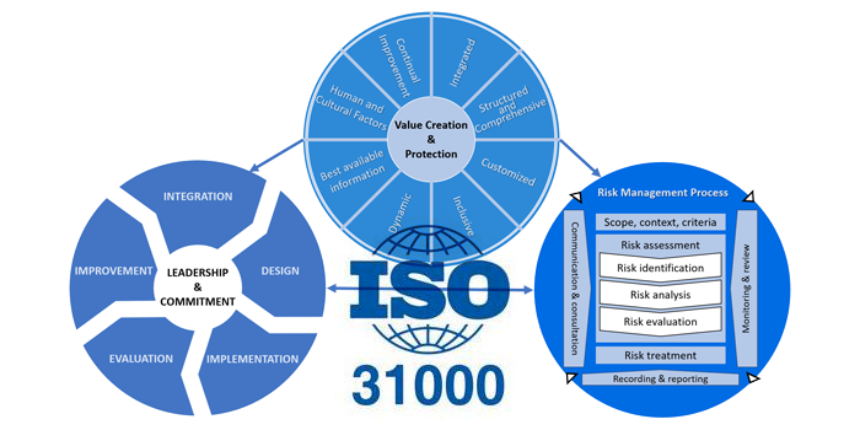ISO 31000 Risk Management is a recognized standard issued by ISO in 2009. This was designed for organizations, be it public or private, to manage the risk associated with their operations.
Adhering to ISO 31000 principles and guidelines allows businesses to be ahead of the competition and guarantee long-term success. It allow organizations to customize their risk management process and fulfill their needs. In this blog, we will deep dive into the principles and guidelines of ISO 31000.
Key Principles and Guidelines of ISO 31000 Risk Management
Integration
- Your organization must integrate risk management into main activities and processes, such as governance, leadership, and decision-making processes.
- ISO 31000 Risk management should be part of your organization's culture and operations.
Customization
- Every organization has different objectives, so you can tailor risk management standards based on your organization's internal and external context to reach your objectives.
- Risk management standards can be unique for every organization due to different objectives and risk appetite.
Structured and Comprehensive Framework
- To achieve ISO certification, businesses must establish a structured risk management framework. This contributes towards an efficient and consistent result.
- Risk management should encompass risk identification, assessment, treatment, and monitoring to maintain productivity and efficiency.
Inclusiveness
- Your organization should consider the involvement of all relevant stakeholders in the risk management process. So, their knowledge and views can ensure risk management is relevant and up to date.
- The risk management standard should be transparent. Don't include any jargon, allowing stakeholders to be included in the framework.
Dynamic Process
- An organization goes through change constantly. Risk management should not be a one-time event but a continuous and dynamic process.
- Ensure the risk management process responds to the change quickly, maintaining efficiency and results.
- With time, risk can emerge, change, or disappear. So, your organizations should regularly review and update risk management strategies as circumstances change.
Clear and Comprehensive Communication
- Your organization never has all the information, but you need to communicate effectively whatever information you have.
- Ensure that historical and current information has been taken into account.
- Stakeholders must have access to all the relevant information to make communication more clear and effective.
Human and Cultural Factors
- Recognize the importance of human behavior and culture, as it can influence risk management.
- Risk management must recognize the organization's capabilities and how people perceive and respond to risks.
Continual Improvement
- To sustain ISO certification, businesses must continually improve their risk management processes.
- Plan, do, check, adjust. Follow this cycle to continually improve.
The Bottom Line!
INTERCERT is an internationally recognized certification institute. We help you improve your risk management strategies by conducting audits at every stage of your organization's life cycle. Adhering to ISO 31000 Risk Management principles and guidelines can increase your stakeholders' confidence and earn your customers' trust.
A PHP Error was encountered
Severity: Notice
Message: Undefined variable: clientlist
Filename: views/blog_view.php
Line Number: 67
Backtrace:
File: /home/sysintercert/public_html/application/views/blog_view.php
Line: 67
Function: _error_handler
File: /home/sysintercert/public_html/application/controllers/Blogs.php
Line: 41
Function: view
File: /home/sysintercert/public_html/index.php
Line: 316
Function: require_once
A PHP Error was encountered
Severity: Warning
Message: Invalid argument supplied for foreach()
Filename: views/blog_view.php
Line Number: 67
Backtrace:
File: /home/sysintercert/public_html/application/views/blog_view.php
Line: 67
Function: _error_handler
File: /home/sysintercert/public_html/application/controllers/Blogs.php
Line: 41
Function: view
File: /home/sysintercert/public_html/index.php
Line: 316
Function: require_once

